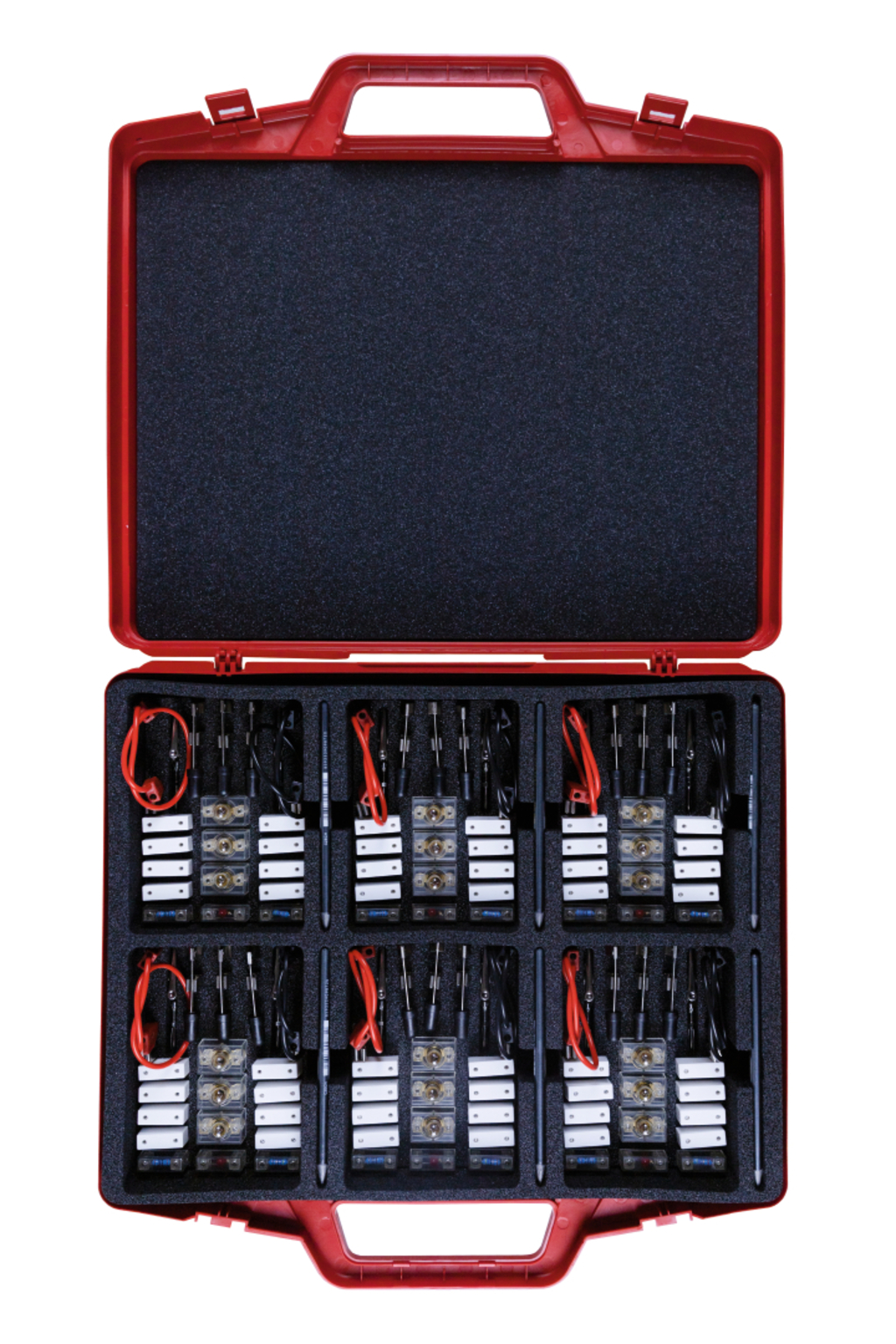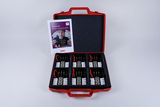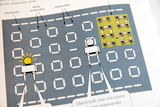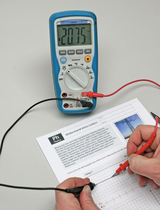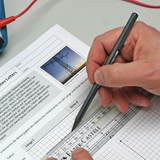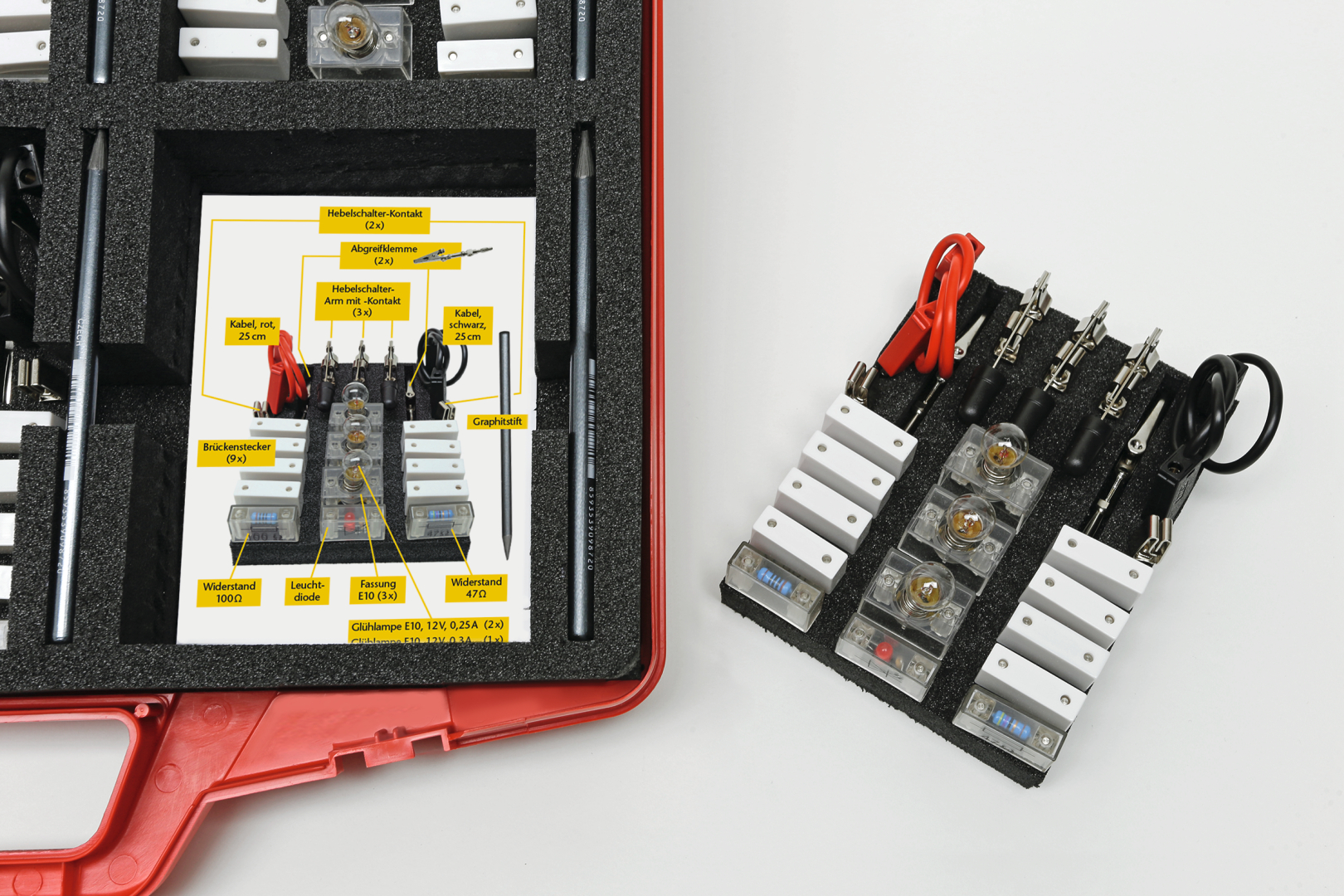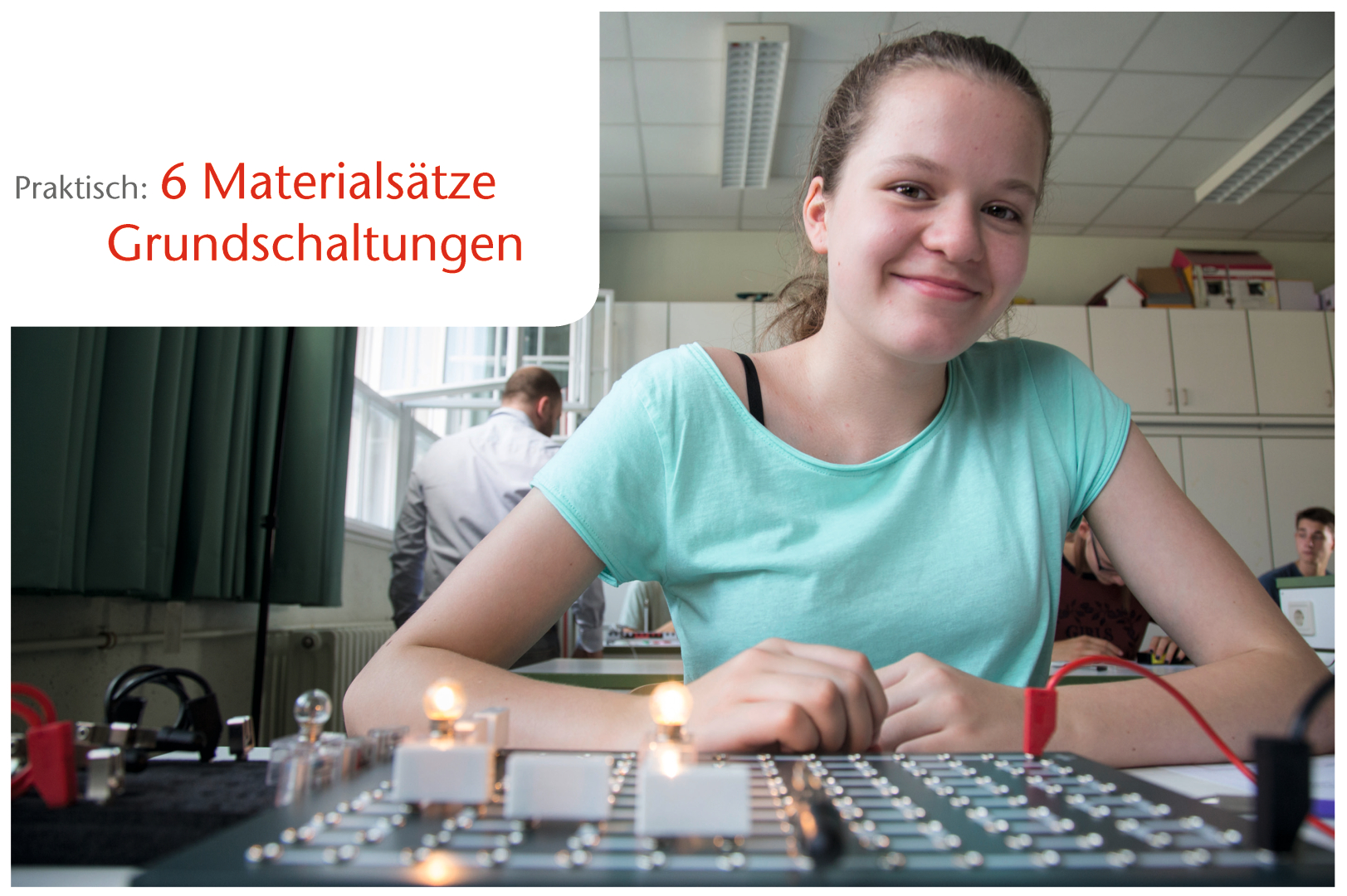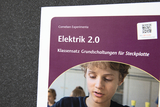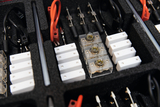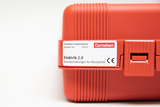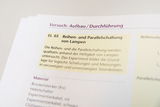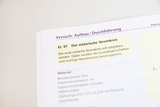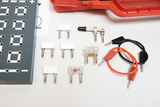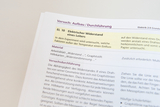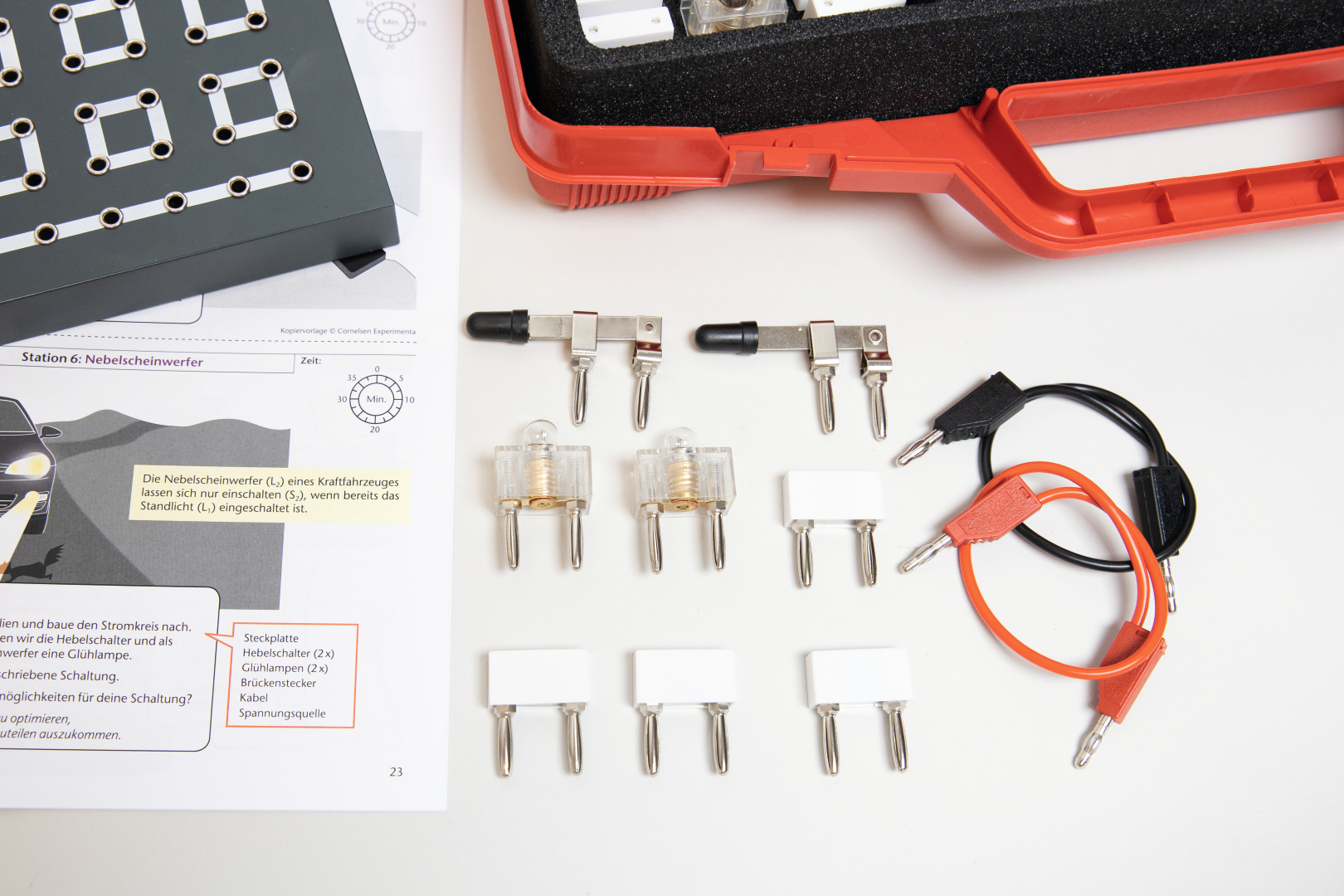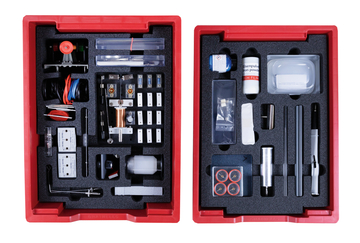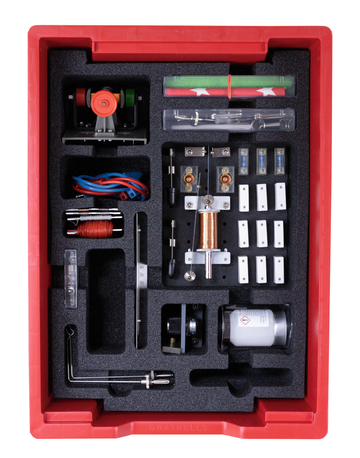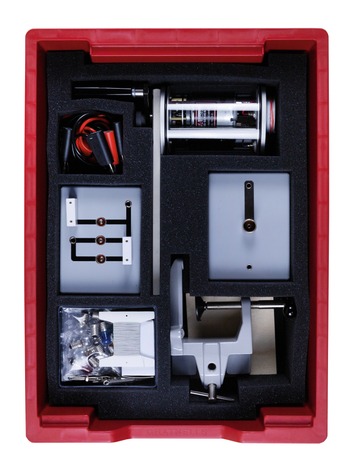Class set Electricity 2.0 Basic circuits for circuit boards
6 groups of students can experiment at the same time.
Experiments
• Electric circuits
• Conductors and insulators
• Series and parallel lamp circuits
• Games with circuits
• Logic circuits
• Practical circuits
• Measurement of electric current
• Measurement of voltage
• Ohm’s law
• Electrical resistance of a conductor
• Kirchhoff’s laws
• Electrical power
Teacher’s manual
• Detailed assembly instructions
• Tips for implementation
• Worksheets for students
• Complete evaluation of examples
A simple circuit is set up on the breadboard and used to learn about the basic properties and important components.
The conductivity of different materials/objects is examined qualitatively.
The series and parallel connection are qualitatively studied based on the brightness of lamps. The experiment forms the basis for logical circuits and measurements in branched and unbranched circuits.
With several puzzles on circuits, the terms series and parallel circuits are practiced and skills in the construction of electrical circuits are consolidated.
The two easiest logical circuits are worked out independently in 2 stations and serve as preparation for learning the stations for "Circuits in the household and everyday life".
In a simple circuit, the current is measured and evaluated at various points.
In a series connection with two lamps, the voltage is measured and evaluated between different points.
The characteristics of an incandescent lamp and an ohmic resistance are measured and evaluated.
The experiment investigates which factors besides temperature have an influence on the resistance of a wire. Instead of a wire, graphite lines are examined on conventional and therefore poorly conducting paper.
Kirchhoff's laws are derived by measuring voltage and current and calculating resistance.
The electrical power is examined based on the brightness of lamps and the proportionality to current and voltage is discovered.
At ten different stations, simple electrical circuits from practice are to be reconstructed. The focus is on the multiple use of series and parallel circuits of switches and lamps.
- 6 × Graphite pencil, 8B Hardness grade
- 12 × Crocodile clip with 4 mm plug
- 18 × Lever switch arm on plug
- 30 × Knife switch spring contact with plug
- 6 × Plug lead, 25 cm, red
- 6 × Plug lead, 25 cm, black
- 18 × Lamp holder MES on 19 mm plug-in element
- 2 × Bulb, MES, 12 V / 0,25 A
- 1 × Storage box, red 430x330x99 mm
- 1 × Carton for storage box, 481x425x107
- 1 × Foam insert, 430x320x20mm
- 6 × LED plug-in-element, red
- 48 × Bridge plug, white 4 mm
- 6 × Resistor, 47 Ohms 1W plug-in element
- 6 × Resistor, 100 Ohm, 1 W plug-in element
- 1 ×
- 6 ×
- 6 ×
